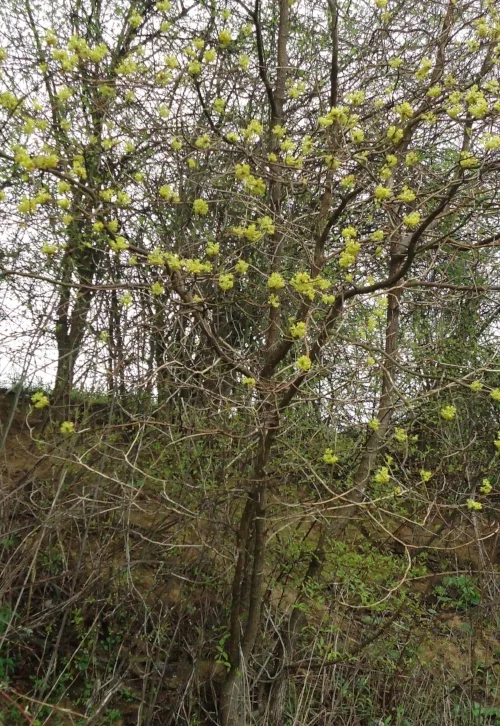Species Spotlight: Sassafras
Sassafras (Sassafras albidum) is blooming now in the Blue Ridge.
Sassafras is a member of the Lauraceae family. This family is characterized by having woody stems, simple leaves, and actinomorphic (star-shaped) flowers that are typically bisexual. A a rather small tree, it is commonly found in early successional habitat such as fence lines and field edges all throughout Virginia. It is one of the first trees to appear in a disturbed habitat, and is commonly found in the understory of mature forests.
Sassafras is easily distinguished by its three different leaf shapes: ovate, mitten-shaped, and three-lobed. The flowers are a delicate yellow with petals of six (common of actinomorphic flowers). Sassafras produces drupes, a berry-like fruit, that is a common part of the diet of the region’s wildlife. Black bear, quail, turkey, rabbits, sapsuckers, yellowthroated warblers, and other songbirds all feast on the produce of the sassafras.
This tree is very aromatic. From the root to the leaves, it has a distinct spicy flavor. The grayish-brown, blocky bark can be scraped just barely to reveal the aroma. Native Americans used this tree for numerous medicinal purposes. The bark was believed to treat fever, diarrhea, rheumatism, measles, and scarlet fever. Infusions of the plant were used to combat coughs, and as a mouthwash for colds. The leaves treated bee stings, wounds, cuts, bruises, and sprained ankles when applied as a poultice. The tree used to be the main ingredient for flavoring root beer, but has since been replaced by artificial flavors.
Sassafras albidum - Sassafras leaves, by Virens (Latin for greening) CC BY 2.0


